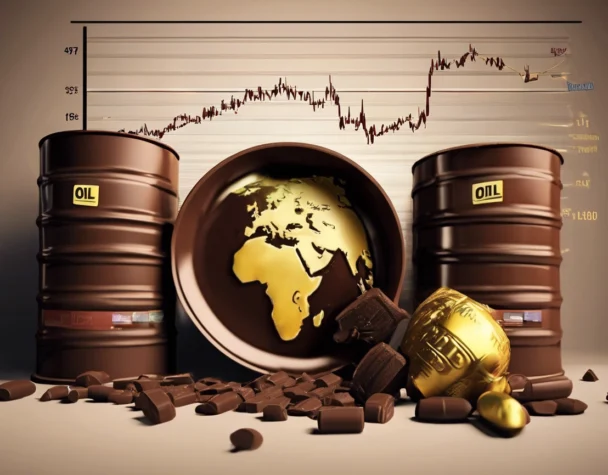
Iran Talks and Cocoa Supply Shock Reshape Global Commodity Landscape
Fri, May 16, 2025Crude Oil Wavers as Iran Negotiations Signal Possible Supply Surge
Energy markets are reacting sharply to developments in U.S.-Iran nuclear negotiations, which could see sanctions lifted and Iranian oil reintroduced to global supply chains. Brent crude recently hovered around $64.70 per barrel, while West Texas Intermediate (WTI) settled near $61.80. The prospect of increased supply is placing downward pressure on prices, despite short-term support from geopolitical tensions and reduced inventories.
Adding to the pressure, the International Energy Agency (IEA) now forecasts a slowdown in oil demand growth for 2025. After posting a robust 990,000 barrels-per-day increase in Q1, demand growth is expected to slow to 740,000 barrels per day for the year. This dip reflects both macroeconomic softness and the accelerating shift toward electric vehicles and alternative energy use. For more on the IEA’s updated projections, visit their May 2025 Oil Market Report.
These oil dynamics come as the Biden administration navigates a delicate geopolitical balance, with the possibility of an Iran agreement complicating already volatile OPEC+ coordination. Should negotiations succeed, traders expect short-term oil oversupply and potential dislocation in U.S. shale production margins.
Cocoa Prices Skyrocket as West Africa Grapples with Crisis
While oil retreats, the cocoa sector is seeing an unprecedented price surge. Cocoa futures have hit all-time highs following devastating weather and crop disease outbreaks in key growing regions of Ghana and Côte d’Ivoire. The resulting production shortfall has triggered global supply chain disruptions, pressuring manufacturers and driving up chocolate prices worldwide.
Dubbed by some analysts as the “Cocoa Crisis,” this development is sparking concern across the food and beverage industry, particularly for firms reliant on stable West African sourcing. More on the broader context of this event can be found on Wikipedia’s Cocoa Crisis page.
Meanwhile, the World Bank has noted a modest 0.5% decline in overall food prices due to easing grains and oilseed prices. However, fertilizer prices rose by 0.7%, which may signal future cost inflation for agricultural producers.
In the metals space, new 25% U.S. tariffs on steel and aluminum imports are adding to uncertainty. While intended to protect domestic industries, the measures have drawn retaliatory actions from major trade partners and could distort pricing for industrial consumers. For context, background on these tariffs is available on Wikipedia’s tariff update page.
In sum, commodity markets are moving in different directions—energy facing a softening outlook, metals tangled in trade friction, and agricultural markets reacting to real-time climate shocks. Stakeholders across sectors will need to stay agile to navigate the rapidly shifting dynamics.

